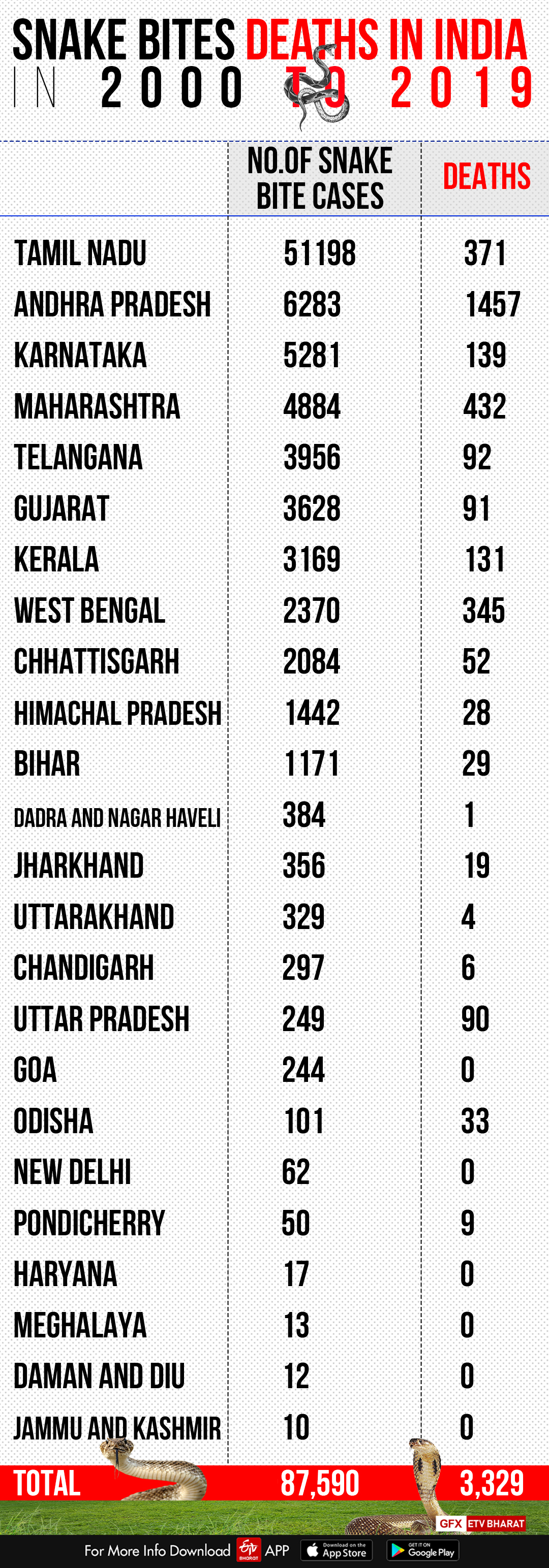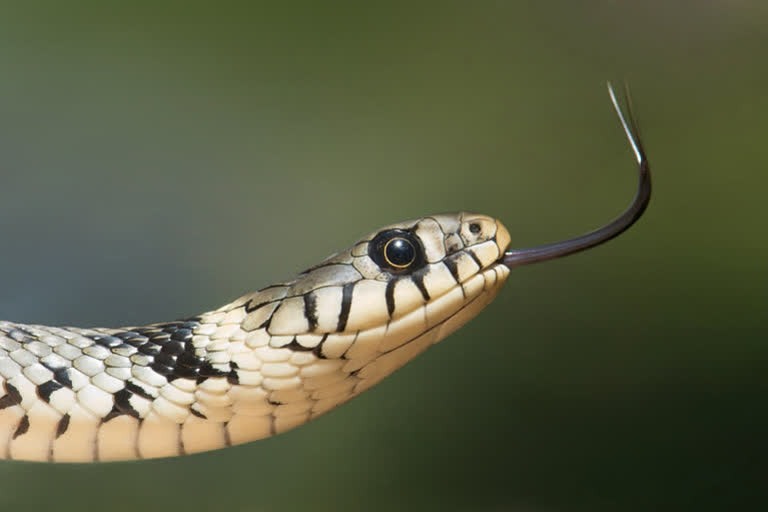Hyderabad: An estimated 1.2 million people died from snake bites in India between 2000 to 2019 in which most of the cases occurred in houses in rural areas, a new study revealed.
A research study, conducted by the Centre for Global Health Research (CGHR) at the University of Toronto, Canada, with Indian and U.K. partners stated that half of all the snakebite deaths occurred during the monsoon period from June to September.

Over 2,833 snakebite deaths from 611,483 verbal autopsies was based on data collected from the Indian Million Death Study from 2001 to 2014, and a systematic literature review was conducted from 2000 to 2019 covering 87,590 snakebites.
Nearly half of the victims were between 30 and 69 years old, and a quarter of them were children below 15 years, the study says.
About 70 per cent of the incident occurred in eight higher burden states and usually during the rainy season and at low altitude.
The average risk of an Indian dying from snakebite before reaching 70 years is approximately 1 in 250, but in some areas, this risk approaches 1 in 100, the study says.
The study revealed that an estimated 1.11–1.77 million bites in 2015 showed 70 per cent symptoms of envenomation.
However, prevention and treatment strategies might substantially reduce snakebite mortality in India.
Around 260 million Indians live in areas of moderate risk of about 1 in 167, study says. Meanwhile, there are 270 species of snakes in India, of which 60 are considered venomous with various levels of toxicity and medically relevant.
Polyvalent snake antivenom is used for treatment which is a mixture made from venom extracted from the ‘big four’ snakes: the spectacled cobra, the common krait, Russell's viper and the saw-scaled viper.
There are 12 other snake species causing fatal bites in the country that are not covered by current anti-venoms.
The current antivenoms ineffective to those patients bitten by snakes outside of the big four, their efficacy is also severely limited between two populations of the big 4 of the same species but from different regions of the country, say experts.
World Health Organisation (WHO) said that the snake bites are now a 'global health priority' as 5.4 million people are estimated to be bitten by snakes every year. Out of which 100,000 people die each year as a result of snake bites and 400,000 people are left disabled or disfigured by their injuries.
Experts suggest that targeting certain areas and educating people with simple methods such as ‘snake-safe’ harvest practices — using rubber boots and gloves, mosquito nets and rechargeable torches could reduce the risk of snakebites.
Precautions needed to tackle snake bites:
- Effective distribution of antivenom should be practised
- Tactful cooperation with local traditional healers to persuade them to refer severely ill patients for treatment with antivenom
- Awareness should be raised regarding the effectiveness of antivenom
- Government hospitals can provide antivenom freely available to snakebite victims
- Health services could monitor adverse reactions to antivenom and improve distribution and cold-chain storage
- Local medical staff and emergency responders training should be improved
- Identify and treat early anaphylactic reactions and administer anti-venom by intravenous injection
Meanwhile, sufficient manufacturing capacity and a better understanding of the distribution of venomous species in the country can help in the development of appropriate anti-venoms.
Also Read: World Population Day: Reproductive health in times of COVID-19



